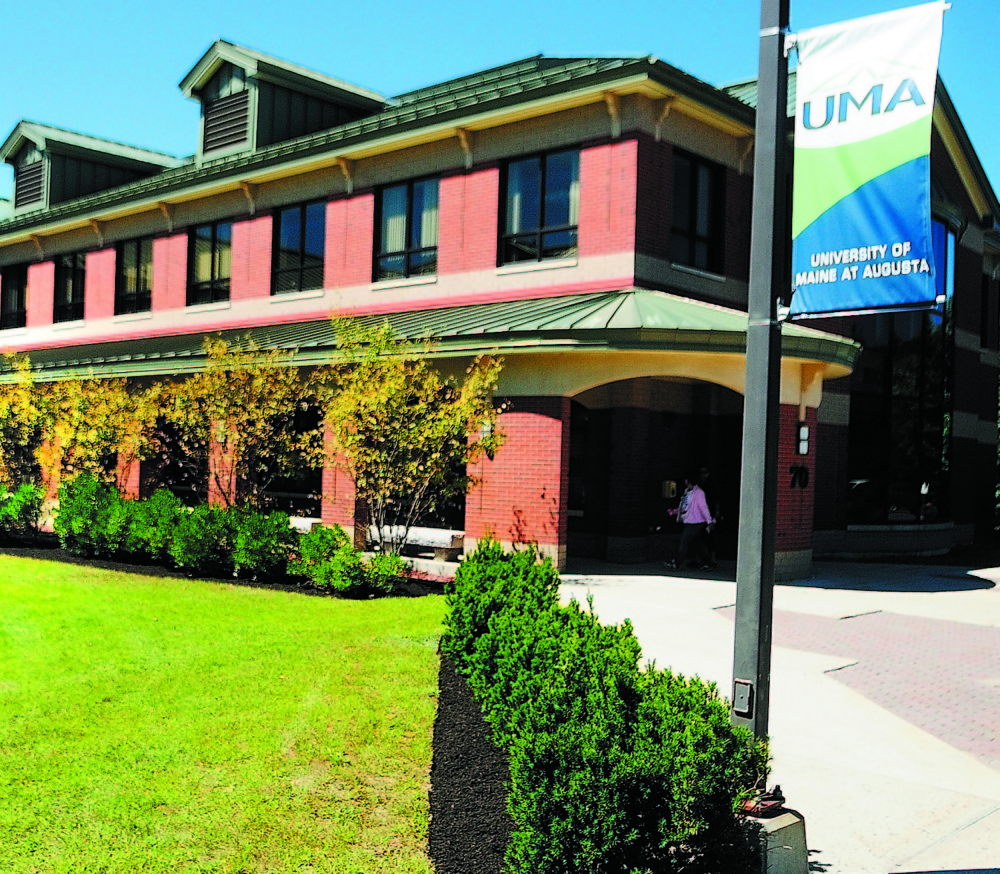AUGUSTA — University of Maine at Augusta officials say an improved ranking in an annual list of the nation’s top universities for online bachelor’s degree programs by U.S. News & World Report show the strides the university has made with its online offerings.
It’s the third year the public university’s nine online programs have been ranked by U.S. News & World Report, a publisher known for its best-college rankings. UMA’s ranking jumped to 40th this year from 103rd in 2013 and 61st in 2014.
“This is an important step for UMA’s evolution,” Gregory LaPointe, executive director of institutional research and planning, said of UMA’s ascension in the rankings. “Very important.”
LaPointe, in an interview Monday with UMA interim President Glenn Cummings and the Kennebec Journal, said the university has been using the feedback from the rankings to improve its online programs. For instance, as a result of the report’s suggested best practices, UMA began including an ethics statement at the start of online classes that students must sign assuring the work they submit is their own.
U.S. News & World Report gathers information about colleges’ programs from questionnaires and assesses schools based on a combination of student engagement, faculty credentials and training, peer reputation, and student services and technology.
Cummings, appointed as interim president in September after former President Allyson Handley left for a job in California, said UMA has tried to be available for its students in unconventional ways long before the proliferation of online programs by offering things such as interactive television courses.
The university started as a community-based institution offering associate degrees, moving to Augusta in 1971, according to its website. After being designated by the state as responsible for leading the University of Maine System in offering associate degree programs throughout the state in 1986, the university developed a statewide interactive television system and a network of more than 100 off-campus centers and regional sites.
Many of UMA’s students are considered nontraditional, meaning they are not students who enroll full time directly out of high school. In fact, there are more nontraditional students at UMA than at any other university system campus. In the fall of 2013, about 60 percent of students at all system campuses were between the ages of 18 and 24. But at UMA, more than 66 percent of the students were age 25 or older, according to a report from the system.
For those nontraditional students, it’s necessary to offer options that allow the students to work jobs or raise families while going to school, Cummings said.
“We weren’t going to get our students unless we were exceptionally flexible,” he said.
The number of students taking the majority of their coursework online at UMA has increased by about 25 percent in the last two years. Last academic year, 36 percent of the university’s roughly 6,300 students completed the majority of their coursework online, according to figures provided by a university spokeswoman.
The students taking the majority of their courses online are slightly older than those taking classes in person — an average age of 34, compared to 32 for on-site students. There also is a higher percentage of veterans taking online courses than in the overall student population. Veterans make up around 6 percent of UMA’s overall enrollment, while around 16 percent of those taking classes online are veterans, LaPointe said.
LaPointe said he sees the university as using the survey process as a way to improve the online programs, but making changes along the lines of the report’s best practices also can result in a higher ranking.
Although studies indicate students learn more in online courses than in traditional face-to-face instruction, Cummings said there is an increased risk that students will drop out. Nontraditional students working other jobs while attending school are more at risk for financial shocks that could make it difficult for them to keep up in classes, he said.
“That’s the vulnerable side of online education. How do you keep them feeling that somebody knows them and somebody likes them? That’s the challenge for us,” Cummings said. “That’s always been the challenge, and that’s the challenge going forward. How do you find ways to stay really in touch effectively with students so they feel like they’re part of a community? Most importantly, they feel like somebody cares.”
In the future, UMA will look to continue improving the experience by developing a mobile application to allow students to access courses and allow the school to reach students more easily and by utilizing staffers who will call and email students to keep up on them, Cummings said.
The school also will encourage students to provide feedback on online courses, he said.
“I think the number one goal is to make online students feel like they’re part of the UMA family. That’s big for us,” Cummings said.
It doesn’t cost UMA less to teach online courses because faculty members are still paid the same to teach the courses, Cummings said. However, the university is looking to do some type of employer-based initiative, similar to Southern New Hampshire University’s competency-based online programs offered to students through their employers. In the Southern New Hampshire University program, students pay a flat fee and the employers pick up the tab for support staff, Cummings said.
Paul Koenig — 621-5663
Twitter: @paul_koenig
Send questions/comments to the editors.




Success. Please wait for the page to reload. If the page does not reload within 5 seconds, please refresh the page.
Enter your email and password to access comments.
Hi, to comment on stories you must . This profile is in addition to your subscription and website login.
Already have a commenting profile? .
Invalid username/password.
Please check your email to confirm and complete your registration.
Only subscribers are eligible to post comments. Please subscribe or login first for digital access. Here’s why.
Use the form below to reset your password. When you've submitted your account email, we will send an email with a reset code.